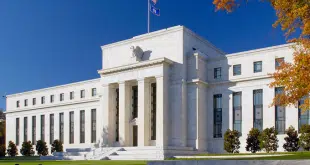Unlike its rivals Visa Inc. and Mastercard Inc., American Express Inc. depends crucially on revenue from the fees it charges merchants for acceptance. These fees, in fact, account for 57% of the company’s overall revenues net of interest expense. So it came as no surprise that AmEx’s top brass spent some time on Thursday explaining why the company’s average discount rate slipped in the second half of last year compared to the last six months of 2016.
While AmEx’s top brass says this result is within expectations, they also forecast that the rate will drop in 2018 even more steeply than a 2-to-3 basis-point slide it had projected early last year. “We expect a larger year-over-year decline in 2018,” Jeff Campbell, executive vice president and chief financial officer, told analysts during an afternoon call, according to a transcript by Seeking Alpha.

One key factor exerting downward pressure on the discount rate is AmEx’s OptBlue program, Campbell told analysts. This program allows independent sales organizations and other third parties to offer AmEx acceptance to smaller merchants at attractive rates. Campbell, however, said the impact of this program on global discount rates “will begin to wind down [in the United States] as we get into 2019″ because all major acquirers have already been enlisted in the program. “We expect the program to continue to help us add more small merchants,” a company spokesman tells Digital Transactions News.
Other forces affecting the average discount rate include growth “in places around the world with lower discount rates,” according to Campbell. Some of AmEx’s cobrand programs, too, carry rates more favorable to the merchant, though these programs also help drive revenue, Campbell told the analysts. Pressure stems, in part, from “decisions we have made about how best to grow our overall economics with some of our larger partners,” he said.
Campbell assured the analysts that revenue growth would continue to be a high priority for AmEx. “Our objective is going to remain what can we do to drive the most revenue growth and that will have varied implications over time I think to the discount rates,” he said.
Revenue, net of interest expense, totaled $8.84 billion for the quarter, up 10% year-over-year. For the year, revenue was $33.4 billion, up 4%, AmEx reported. For the quarter, the company took a $1.2 billion loss, compared to a year-earlier gain of $825 million. Net income for 2017 was down 49%, to $2.74 billion.





